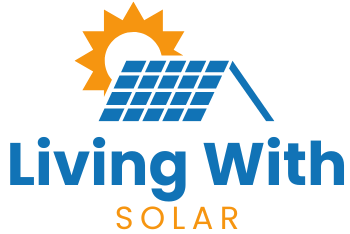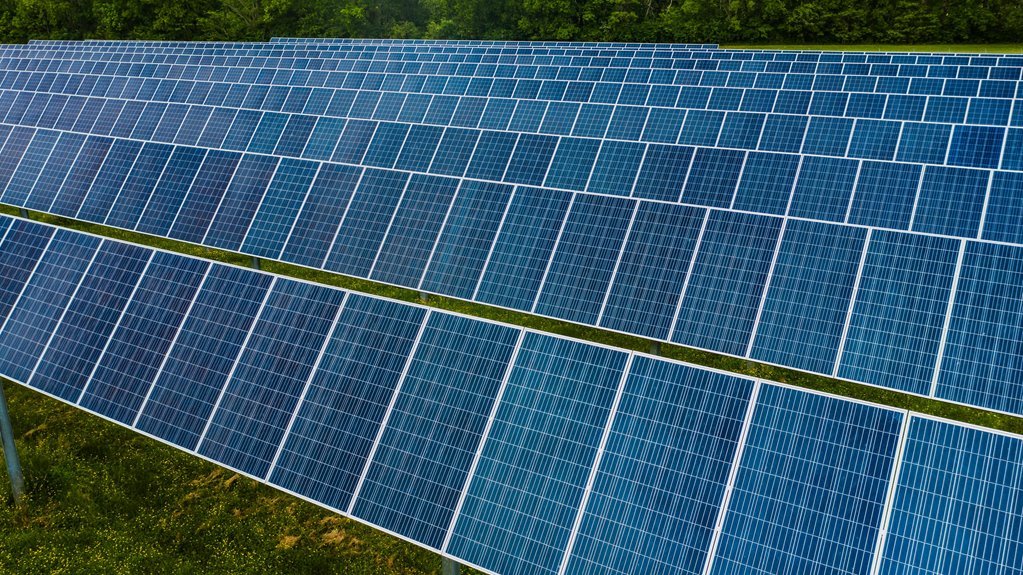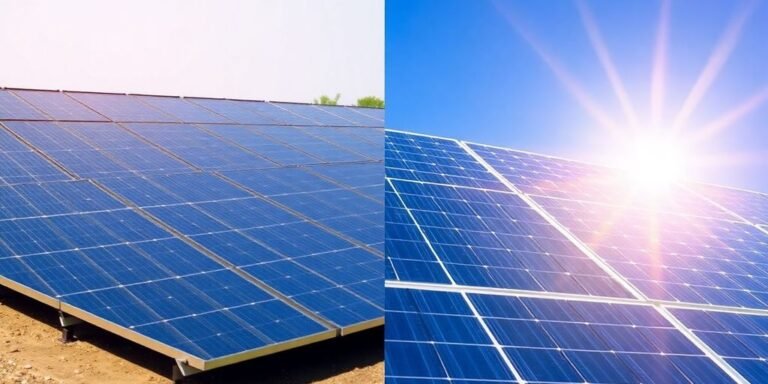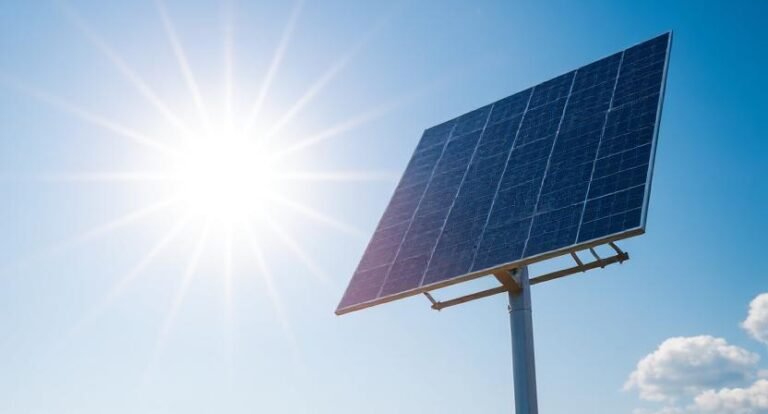When considering the transition towards sustainable energy sources, it’s crucial to grasp the nuances between solar power and traditional energy methods. The benefits and drawbacks of each play a pivotal role in shaping our energy landscape. By unraveling the complexities of solar power versus conventional energy sources, you’ll gain a deeper understanding of the implications for our environment and economy.
Key Takeaways
- Solar power emits zero greenhouse gases, while traditional sources like coal/oil contribute to pollution.
- Initial solar panel installation cost is higher but offers long-term economic benefits.
- Solar energy systems require less maintenance compared to traditional energy infrastructure.
- Solar power is renewable and sustainable, reducing reliance on non-renewable fossil fuels.
- Solar technology advancements drive increased efficiency and cost-effectiveness over time.
Solar Power Basics
When it comes to understanding solar power basics, one key concept to grasp is how sunlight is converted into electricity.
Solar panels, made up of photovoltaic cells, capture sunlight and convert it into direct current (DC) electricity through a process called the photovoltaic effect.
These cells are typically made of silicon, a semiconductor material that releases electrons when exposed to sunlight.
The flow of these electrons creates an electrical current, which can then be converted into alternating current (AC) electricity using an inverter.
This AC electricity can power homes, businesses, and even entire communities, providing a sustainable and renewable energy source that helps reduce reliance on fossil fuels.
Traditional Energy Sources Overview
Exploring traditional energy sources reveals a diverse mix of non-renewable options like coal, oil, and natural gas that have long powered our modern world.
Coal, once a dominant energy source, is known for its abundance and relatively low cost. Oil, crucial for transportation and heating, remains a cornerstone of the global energy mix. Natural gas, cleaner than coal and oil, is increasingly popular for electricity generation.
Nuclear energy, generated from uranium, provides a steady power supply with minimal greenhouse gas emissions.
Hydropower, harnessed from flowing water, is another significant traditional energy source.
These sources have been vital for meeting energy demands, but concerns about sustainability and environmental impact drive the search for cleaner alternatives.
Environmental Impact Comparison
Moving from a focus on traditional energy sources to an examination of their environmental impact sheds light on the implications of our energy choices.
Traditional energy sources such as coal and oil release harmful greenhouse gases into the atmosphere, contributing to climate change and air pollution.
In contrast, solar power generates electricity without producing any emissions or pollutants during operation.
The production of solar panels does have some environmental impact, primarily in the form of energy consumption and potential chemical waste.
However, over the lifetime of a solar system, the environmental benefits far outweigh these initial costs.
By choosing solar power over traditional energy sources, you can significantly reduce your carbon footprint and contribute to a cleaner, healthier planet for future generations.
Cost Analysis: Solar vs. Traditional
Comparing the cost of solar power to traditional energy sources is essential for making informed decisions about energy consumption.
Initially, the upfront cost of installing solar panels can be higher, but over time, solar energy proves to be more cost-effective.
With advancements in technology, the price of solar panels has significantly decreased, making them more accessible.
Moreover, solar energy systems have lower maintenance costs compared to traditional energy sources like coal or natural gas.
When considering the long-term benefits and savings on electricity bills, solar power emerges as a more economical choice.
It’s crucial to analyze not just the initial investment but also the overall expenses over the system’s lifespan to determine the most cost-effective energy option for your needs.
Efficiency and Reliability Factors
Analyzing the efficiency and reliability factors of solar power and traditional energy sources is crucial in determining the most suitable energy option for your needs.
When comparing these factors, consider the following:
- Efficiency: Solar power systems have improved significantly in efficiency over the years, with modern panels converting sunlight into electricity at a much higher rate.
- Reliability: Traditional energy sources, such as coal or natural gas, have a proven track record of providing consistent power supply regardless of weather conditions.
- Maintenance: Solar power systems generally require less maintenance compared to traditional energy sources, which often involve complex machinery and infrastructure upkeep.
Future Outlook and Trends
Considering the advancements in technology and the shifting global energy landscape, it’s evident that both solar power and traditional energy sources are experiencing changes that will shape the future of energy production.
Solar power is projected to continue its growth trajectory, driven by declining costs of solar panels and batteries, as well as increased efficiency in energy storage solutions.
On the other hand, traditional energy sources are also adapting by integrating more renewable energy into their portfolios and exploring cleaner technologies like carbon capture and storage.
The future outlook suggests a more diversified energy mix, with solar power playing a significant role in meeting the world’s energy demands while traditional sources evolve to become more sustainable and environmentally friendly.
Frequently Asked Questions
Can Solar Panels Work in Extreme Weather Conditions?
Yes, solar panels can work in extreme weather conditions. They are designed to withstand various elements like snow, hail, and high winds. However, excessive heat can slightly decrease their efficiency, but they still produce power.
How Are Traditional Energy Sources Impacting Indigenous Communities?
Traditional energy sources are negatively impacting indigenous communities by causing environmental degradation, health issues, and cultural disruptions. You can advocate for sustainable alternatives, support local initiatives, and amplify indigenous voices to address these impacts effectively.
Are There Any Health Risks Associated With Solar Power?
You should know that while solar power is generally safe, improper installation or maintenance can pose risks like electrical hazards. Regular maintenance and hiring qualified professionals can help ensure your solar system operates safely.
What Happens to Solar Panels at the End of Their Lifespan?
When solar panels reach the end of their lifespan, they can be recycled to recover materials. This process reduces waste and allows for the reuse of valuable resources. It’s important to properly dispose of them for environmental sustainability.
How Do Traditional Energy Sources Contribute to Geopolitical Conflicts?
Traditional energy sources, like oil and gas, often lead to geopolitical conflicts due to competition over resources. They can create tensions between nations, impacting global stability. Consider diversifying energy options to reduce reliance on these sources and promote peace.
Conclusion
In conclusion, choosing solar power over traditional energy sources is a smart and sustainable decision for the future. With zero emissions, decreasing costs, and long-term savings, solar energy offers a cleaner and more efficient alternative. By considering the environmental impact, cost analysis, efficiency, and reliability factors, it’s clear that solar power is a key player in shaping a more sustainable energy landscape. So why wait? Make the switch to solar power today for a brighter tomorrow.





